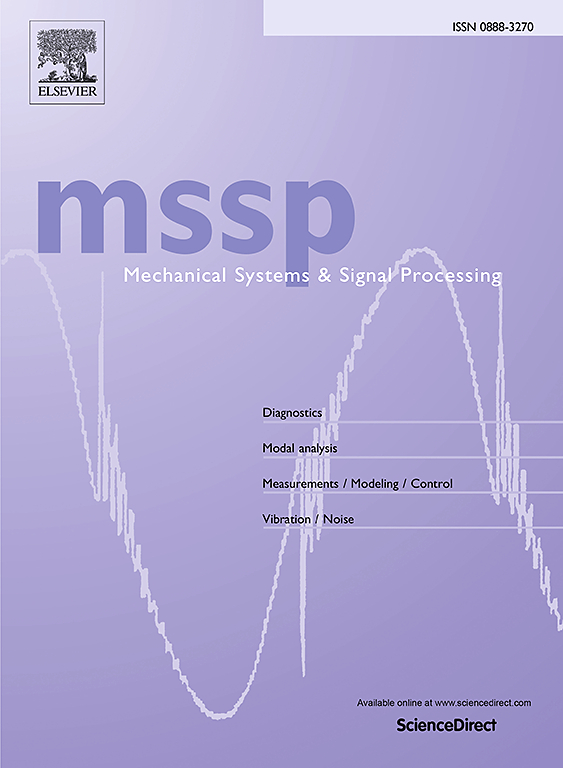3D-DIC full field experimental modal analysis of a demo airplane by using low-speed cameras and a reconstruction approach
IF 7.9
1区 工程技术
Q1 ENGINEERING, MECHANICAL
引用次数: 0
Abstract
Experimental Modal Analysis (EMA) has developed into a major technology for the study of structural dynamics in the past several decades. Through Experimental Modal Analysis, complex structure phenomena in structural dynamics can be represented using decoupled modes consisting of natural frequency, modal damping, and mode shapes. The dynamic properties of structures can be extracted from both forced and ambient vibration tests. Whether the object is a wind turbine blade rotating at a certain speed, a bridge sustaining traffic, or an airplane under wind excitation, Modal Analysis can be applied to provide insightful solutions. These tests are mainly performed using point-wise sensors connected to the structure. A limited number of transducers might not be able to comprehensively measure the dynamic response, especially when dealing with large-size or very small structures, lightweight components, or rotating structures. This is one of the reasons behind the development of image processing techniques, like Digital Image Correlation (DIC), to perform modal analysis. A particular field of interest in using DIC for vibration analysis is in using cheap, light, and low-speed cameras to detect a structure’s high-frequency behavior. Nevertheless, except for a few highly specialized and controlled scenarios, the effectiveness of camera-based EMA is constrained by the relatively low sampling frequency of cameras in contrast to accelerometers, strain gauges, and laser Doppler vibrometers. In this paper, we introduce an innovative acquisition method designed to estimate modal parameters beyond the Nyquist–Shannon limit (i.e., half of the camera’s frame rate). This is achieved through the utilization of periodic excitation and signal reconstruction techniques. As a result, it becomes feasible to reconstruct a high-sampled displacement signal using low-speed cameras. The accuracy of the methodology is numerically investigated by using a simple MDOFs system as a proof of concept. Furthermore, an experimental validation on a simple airplane mock-up is presented. The displacements are obtained using a stereo camera setup and then computed by DIC. Finally, they are combined with the force signal to compute the structure’s FRFs for the modal parameter estimation. Furthermore, the DIC estimated modal parameters are validated by using accelerometers mounted on the test structure, and a full field validation of the corresponding numerical model is presented.
求助全文
约1分钟内获得全文
求助全文
来源期刊

Mechanical Systems and Signal Processing
工程技术-工程:机械
CiteScore
14.80
自引率
13.10%
发文量
1183
审稿时长
5.4 months
期刊介绍:
Journal Name: Mechanical Systems and Signal Processing (MSSP)
Interdisciplinary Focus:
Mechanical, Aerospace, and Civil Engineering
Purpose:Reporting scientific advancements of the highest quality
Arising from new techniques in sensing, instrumentation, signal processing, modelling, and control of dynamic systems
 求助内容:
求助内容: 应助结果提醒方式:
应助结果提醒方式:


